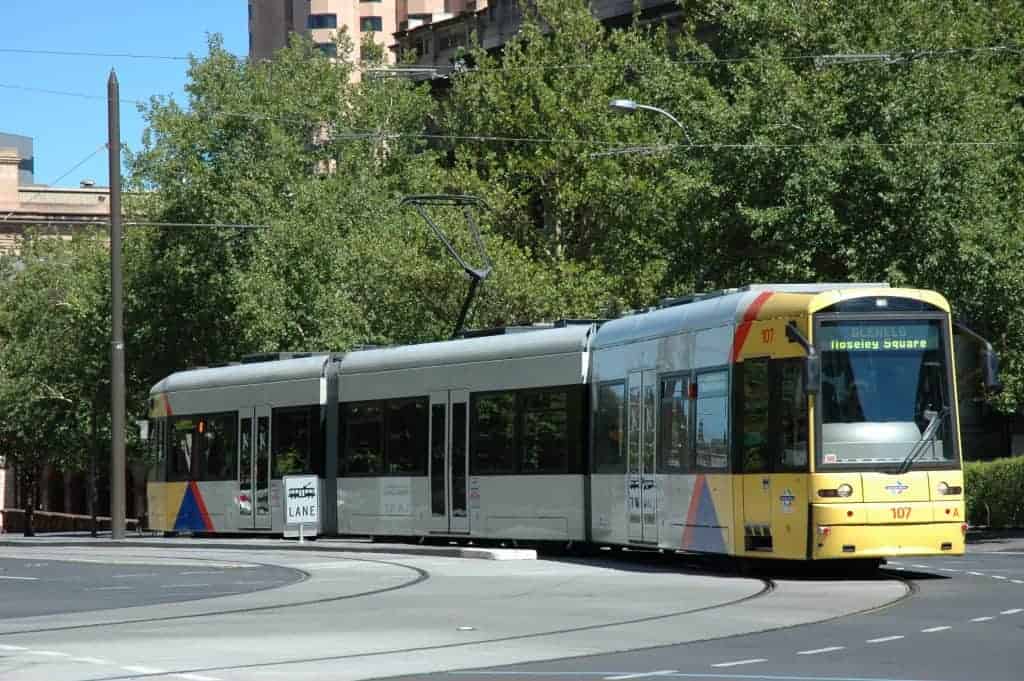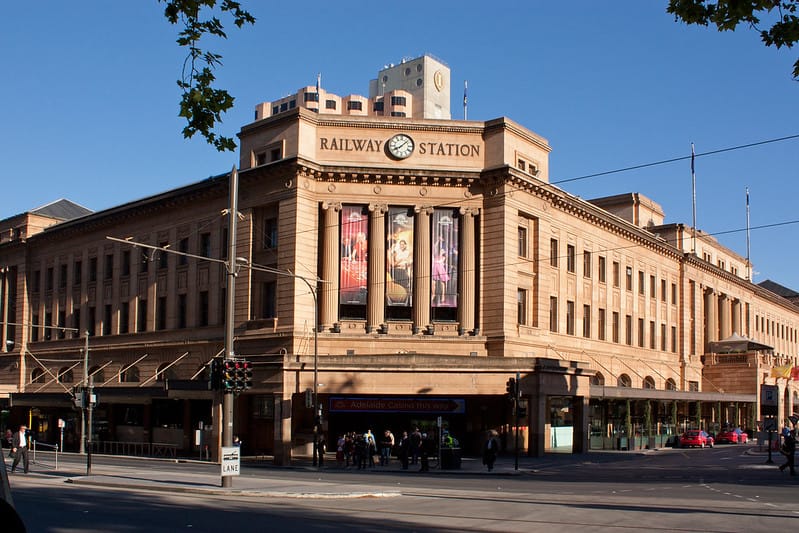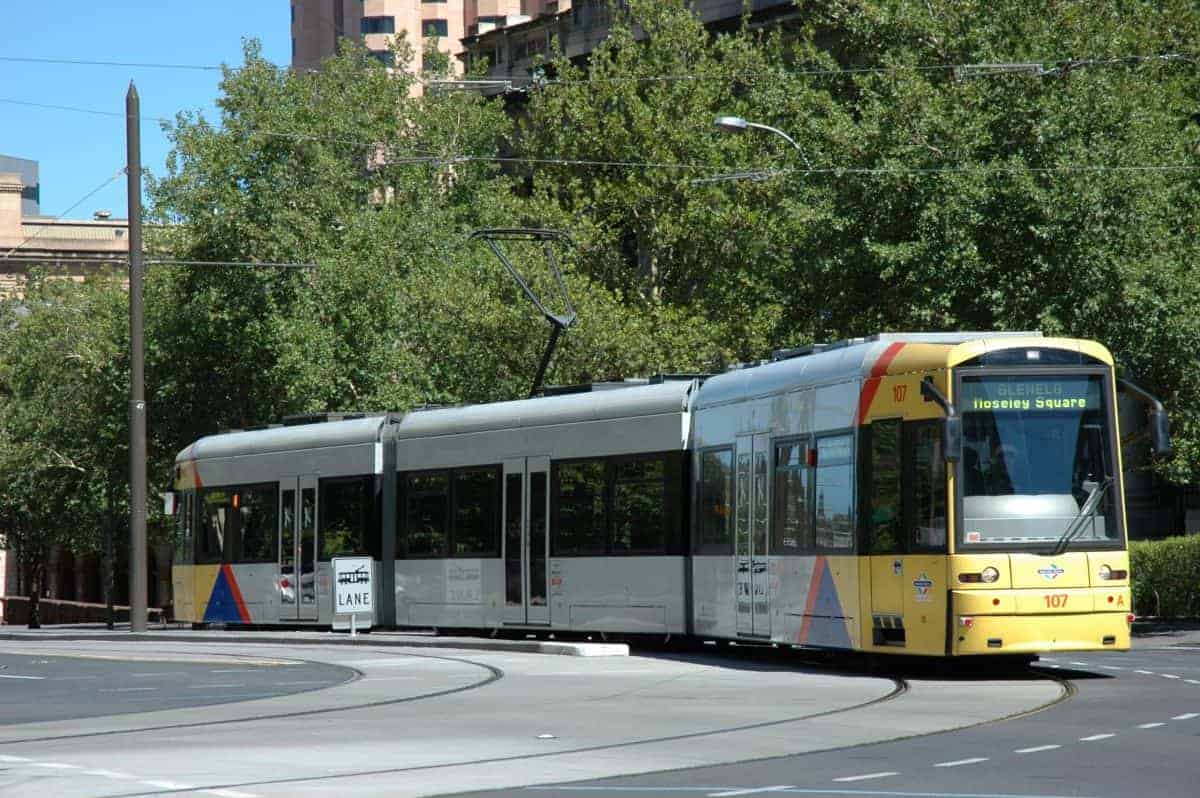The public transport system in Adelaide is divided into 3 parts.
- Trams
- Buses plus the O-Bahn system
- Trains
Buying Tickets on Adelaide Buses, Trams and Train system
The Adelaide Metro is the public transport system that operates in and around the city of Adelaide, South Australia. It includes buses, trains, and trams, and provides a convenient and affordable way for residents and visitors to get around the city. To use the Adelaide Metro, passengers need to purchase a ticket, and there are several options available.
One of the easiest ways to purchase tickets for the Adelaide Metro is through the Metrocard system. Metrocard is a rechargeable smart card that can be used to pay for travel on buses, trains, and trams. The card can be purchased for a small fee at selected retailers and Adelaide Metro InfoCentres, and can be topped up with credit as needed. The card can be used to pay for single trips, or for multiple trips over a set period, such as a day or week.
Another option for purchasing tickets on the Adelaide Metro is through the mTicket app. The app allows passengers to purchase and store tickets on their smartphone, eliminating the need to carry a physical ticket or Metrocard. Tickets can be purchased for single trips, or for multiple trips over a set period, and can be used on buses, trains, and trams. The app also provides real-time information on services, including estimated arrival times and service disruptions.
For passengers who prefer to pay with cash, tickets can be purchased on board Adelaide Metro buses and trams. However, it’s important to note that drivers do not carry change, so passengers should have the exact fare ready. Tickets purchased on board are generally more expensive than those purchased through the Metrocard or mTicket systems.
Finally, for visitors to Adelaide, the Adelaide Metro also offers a Visitor Pass. The Visitor Pass provides unlimited travel on all Adelaide Metro services for a set period, such as 3, 5, or 7 days. The pass can be purchased online or at selected retailers and Adelaide Metro InfoCentres.
Overall, there are several options available for purchasing tickets on the Adelaide Metro, including the Metrocard system, the mTicket app, purchasing tickets on board, and the Visitor Pass. Choosing the right option depends on individual needs and preferences, but all options provide a convenient and affordable way to travel around Adelaide. It’s important to remember to have a valid ticket when using Adelaide Metro services, as ticket inspections are regularly carried out and fines can be issued for those without a valid ticket.
- Single trip ticket: A single trip ticket allows you to travel on any Adelaide Metro tram or bus for up to two hours after validation. The cost of a single trip ticket is AUD 5.50 for adults, AUD 3.00 for concession holders, and AUD 2.70 for children aged 5-15.
- Daytrip ticket: A daytrip ticket allows you to travel on any Adelaide Metro tram or bus for an entire day. The cost of a daytrip ticket is AUD 10.00 for adults, AUD 6.20 for concession holders, and AUD 4.90 for children aged 5-15.
- Metrocard: A Metrocard is a rechargeable smart card that can be used to travel on any Adelaide Metro tram or bus. The cost of a Metrocard is AUD 5.00, and it can be recharged with a minimum value of AUD 5.00. The cost of a trip using a Metrocard is AUD 3.14 for adults, AUD 1.57 for concession holders, and AUD 0.87 for children aged 5-15.

Adelaide Trams
Adelaide, the capital city of South Australia, is well-known for its extensive public transport system, including its tram service. The Adelaide tram service is one of the most popular ways for locals and tourists to get around the city. In this article, we will take a closer look at the tram lines and cost in Adelaide.
Tram Lines in Adelaide:
Adelaide’s tram network is operated by Adelaide Metro, and it consists of four main lines: the Glenelg line, the Entertainment Centre line, the Botanic Gardens line, and the Festival Plaza line. Let’s take a closer look at each of these lines.
- Glenelg Line: The Glenelg line is the oldest and the most popular tram line in Adelaide. It starts from the city center and ends at Glenelg, a seaside suburb located approximately 10 kilometers southwest of the city. This line operates seven days a week, with trams running every 15 minutes during peak hours and every 20-30 minutes during off-peak hours.
- Entertainment Centre Line: The Entertainment Centre line runs from the city center to the Adelaide Entertainment Centre, located in Hindmarsh, a suburb located approximately 4 kilometers northwest of the city. This line operates only during events and concerts held at the Entertainment Centre.
- Botanic Gardens Line: The Botanic Gardens line starts from the city center and ends at the Adelaide Botanic Gardens, located in North Adelaide, a suburb located approximately 2 kilometers north of the city. This line operates only on weekends and public holidays.
- Festival Plaza Line: The Festival Plaza line is the newest addition to the Adelaide tram network. It runs from the city center to the Festival Plaza, located in the Adelaide Riverbank Precinct, adjacent to the Adelaide Casino. This line operates seven days a week, with trams running every 15 minutes during peak hours and every 20-30 minutes during off-peak hours.
Here is a map of the tram system in Adelaide.
https://adelaidemetro.com.au/maps/trams
What is an O-Bahn System?
The O-Bahn is a type of guided bus rapid transit (BRT) system that is used in the city of Adelaide, Australia.
The O-Bahn is a unique public transport system in Adelaide, South Australia that combines aspects of both buses and trains to provide a fast, efficient and reliable service. It has been in operation since 1986 and has become an integral part of Adelaide’s public transport network.
The O-Bahn is a guided busway system that operates on a dedicated corridor, separate from other traffic. This corridor consists of a concrete track with embedded steel guidance rails that allow the buses to be guided along the route. The track runs for approximately 12.7 kilometres from the Adelaide city centre to the northeastern suburb of Modbury, with 2 stations along the way.
One of the main advantages of the O-Bahn system is its speed. The buses can travel at speeds of up to 100 kilometres per hour, with an average speed of around 80 kilometres per hour. This is faster than most other public transport systems, including trains. The system also has priority at intersections, with traffic lights adjusted to allow the buses to pass through without stopping.
Another advantage of the O-Bahn is its reliability. The dedicated corridor means that the buses are not affected by traffic congestion or accidents, which can cause delays on other public transport systems. The system also operates on a frequent schedule, with buses running every 10 minutes during peak times and every 15-20 minutes at other times.
The O-Bahn buses themselves are specially designed for the system, with their wheels and suspension systems allowing them to smoothly and safely navigate the track. They also have a lower environmental impact than traditional buses, with lower emissions and noise levels.
In addition to the main O-Bahn route, there are also feeder bus services that connect to the system, allowing passengers to easily access the system from surrounding suburbs. There are also park-and-ride facilities at some stations, where passengers can park their cars and take the O-Bahn into the city.
Overall, the O-Bahn is a highly effective and efficient public transport system that has become a key part of Adelaide’s transport network. Its speed, reliability and ease of use make it a popular choice for commuters and visitors alike, and it is a testament to the innovative thinking and planning that has gone into the system.
Adelaide Buses
Its fairly unlikely you will use the buses that much, however it is worth knowing that there is a bus that goes to the Adelaide International Airport that you can pick up on Grenfell and Currie Streets. The bus number is either J1 or J2 (subject to change) so check beforehand.
The other 2 places you may want to go that are only served by buses is St Kilda Tramway Museum Bus 401 from the city. Mount Lofty Botanical Gardens you need to take the bus to Crafers and then another bus to the gardens (only 4 buses per day). Make sure you validate your ticket on the machine when you enter.
There is also an O-Bahn service into the north eastern suburbs that finishes at Tea Tree Plaza Shopping Centre.
Here is a link to the bus timetables
https://adelaidemetro.com.au/timetables/buses

Adelaide Trains
There are 6 different lines and there are only limited places that are of interest to travellers.
Outer Harbour Line
This line will take you to the historic area of Port Adelaide and the line continues to Outer Harbour where cruise ships dock. You can also stop at Semaphore if you don’t mind walking to the beach.
Grange Line
Grange line will take you to Grange Beach which is a very nice swimming beach
Gawler Line
Services the northern suburbs
Belair Line
Services Blackwood and Belair
Seaford Line
You can get to a number of the southern beaches the best being Brighton Beach
Here is a route map for Adelaide Train system
https://adelaidemetro.com.au/Timetables-Maps/Rail-Map
Interstate Trains
The Adelaide Parklands Rail Terminal at Keswick is the starting point for long-distance interstate travel. There are two major lines that operate from the station, The Ghan and Indian – Pacific. The Ghan connects Adelaide to Darwin via Alice Springs. Indian-Pacific connects Adelaide to Sydney and Perth and is one of the rare real transcontinental train lines in the world. Whether you are arriving to or leaving Adelaide, make sure to book your seat. These trains operate twice a week and you need to book in advance.
The Overland Train links Adelaide with Melbourne and at the time of writing is at risk of being discontinued so you will need to further research whether this service is still available.
From the city go to Currie Street stop Y2 and transfer to 167 line, which will take you to Richmond Road stop A1. From there it’s a short walk to Adelaide Parklands Rail Terminal but to be honest a taxi or Uber is a better option especially with luggage.
Airport Transfers and Public Transport to Adelaide International Airport
Public transport to and from Adelaide airport is run by Adelaide Metro, a company owned by the city of Adelaide’s Public transport division. It operates large number of buses, trams and trains throughout the city and is the largest public transport company in South Australia.
While it may not be the most reliable transport company in the world, Adelaide Metro still provides a very valuable service to the city. Buses are relatively new and clean and unlike shuttle buses, they have priorities on many intersections, with dedicated bus lanes and bus only lights at many traffic lights.
Their dedicated airport lines are called JetLine. There are six lines that connect airport to different points in Adelaide: J1, J1a, J1x, J2, J7 and J8. Not all buses are equipped with upright rack for luggage.
- J1a is a shorter version of J1 that goes from City to Airport.
- J1x is the only line at the moment equipped with double decker buses designed for airport passengers, with luggage racks on lower deck. It is part of newly introduced service called JetExpress that started in November of 2014. This is an express line and is the fastest bus line from airport to the city. It is designed to cater to airport travellers by taking them to key city locations and hotels. JetExpress line runs hourly on weekdays during daytime. J1x starts at Adelaide Airport and goes to City via Grote Street, Wakefield Street, Pulteney Street, North Terrace and Sir Donald Bradman Drive .
- J2 is another line that connects Harbour Town Centre Interchange to City via West Beach, Adelaide Airport and Sir Donald Bradman Drive.
- J7 and J8 both connect West Lakes Centre Interchange to Marion Centre Interchange but on different routes. J7 goes via Queen Elizabeth Hospital, Adelaide Airport and Marion Road, while J8 goes via Torrens Road, Arndale Centre Interchange, Queen Elizabeth Hospital, Adelaide Airport and Marion Road.
Transport from Adelaide Airport to the city and vice versa is possible with shuttle bus service. There are two companies that offer shuttle service on the airport, Northern Flyer and Adelaide Airport Flyer. Both companies offer door to door service, with mandatory reservations. Bookings can be made by phone or online through their sites.
Of course your other option is to get a taxi, Uber etc etc that will get you a door to door service at a reasonable price.

